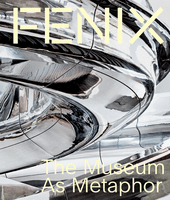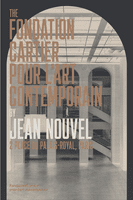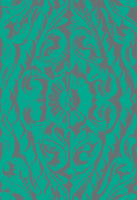| | BOOK FORMAT
Hardcover, 9.75 x 12 in. / 397 pgs / 250 color. PUBLISHING STATUS
Pub Date 12/1/2007
Out of print DISTRIBUTION
D.A.P. Exclusive
Catalog: FALL 2007 p. 107 PRODUCT DETAILS
ISBN 9789056625740 FLAT40
List Price: $75.00 CAD $90.00 AVAILABILITY
Not available | TERRITORY
NA LA ME | | THE FALL 2025 ARTBOOK | D.A.P. CATALOG  | | Preview our FALL 2025 catalog, featuring more than 500 new books on art, photography, design, architecture, film, music and visual culture.
|
| | | P.J.H. Cuypers 1827-1921The Complete WorksEdited by Hetty Berens. Text by Jan Bank, Gonda Buursma, Loes van Harrevelt, Ida Jager, Loes Harrevelt.
Rarely has a Dutch architect so characterized an era as Pierre Cuypers (1827-1921), not only for such landmark buildings as the Rijksmuseum and the Central Station in Amsterdam, but also for his numerous neo-Gothic Catholic churches, which are now intimately associated with the popular conception of Dutch cities and villages. Cuypers' controversial views on restoration, his plea for a revaluation of Gothic architecture and his influence on H.P. Berlage and Michiel de Klerk make him the most important Dutch architect of his time. Not only did he leave a quantitative mark on the built environment of the Netherlands, he elevated the quality of Dutch architecture generally, and established a precedent for the modern architecture firm. This beautifully designed publication unlocks Cuypers' complete oeuvre for the first time. A selection of essays sheds light on the scope and significance of his work, and hundreds of photos, designs and maps make this book definitive and complete.
The son of a church painter, Pierre Cuypers (1827-1921) was born in Roermond, the Netherlands. In 1852, he opened a workshop for the manufacture of ecclesiastical art, but quickly moved into architectural work. As well as creating some of Amsterdam's most beloved buildings, he built over 100 churches and restored countless others.
|
| | | | FORTHCOMING AND NEW: ARCHITECTURE |  | SKIRAISBN: 9788857253374
USD $75.00 | CAD $105Pub Date: 10/28/2025
Active | In stock
|
|  | Lars Müller PublishersISBN: 9783037787861
USD $60.00 | CAD $85Pub Date: 10/28/2025
Active | In stock
|
|  | Fondation Cartier pour l'art contemporainISBN: 9782869251946
USD $55.00 | CAD $78Pub Date: 1/27/2026
Forthcoming
|
|  | La FábricaISBN: 9788410024199
USD $40.00 | CAD $60 UK £ 34Pub Date: 4/28/2026
Forthcoming
|
|  | Lars Müller PublishersISBN: 9783037787670
USD $50.00 | CAD $75Pub Date: 2/4/2025
Active | In stock
|
|  | ArquineISBN: 9786078880256
USD $110.00 | CAD $160 UK £ 95Pub Date: 9/17/2024
Active | Out of stock
|
|  | SKIRAISBN: 9788857250397
USD $60.00 | CAD $86Pub Date: 10/28/2025
Active | In stock
|
|  | SKIRAISBN: 9788857250373
USD $60.00 | CAD $86Pub Date: 2/3/2026
Forthcoming
|
|  | SKIRAISBN: 9788857250359
USD $60.00 | CAD $86Pub Date: 10/7/2025
Active | In stock
|
|  | SKIRAISBN: 9788857250335
USD $60.00 | CAD $86Pub Date: 12/9/2025
Active | In stock
|
|  | SKIRAISBN: 9788857250106
USD $60.00 | CAD $87Pub Date: 3/25/2025
Active | In stock
|
|  | SKIRAISBN: 9788857250090
USD $60.00 | CAD $87Pub Date: 2/3/2026
Forthcoming
|
|
|
| |
| |

|
FORMAT: Hardcover, 9.75 x 12 in. / 397 pgs / 250 color.
LIST PRICE: U.S. $75.00
LIST PRICE: CANADA $90
ISBN: 9789056625740
PUBLISHER: nai010 publishers
AVAILABLE: 12/1/2007
DISTRIBUTION: D.A.P.
RETAILER DISC: FLAT40
PUBLISHING STATUS: Out of print
AVAILABILITY: Not available
TERRITORY: NA LA ME | D.A.P. CATALOG: FALL 2007 Page 107 | PRESS INQUIRIES
Tel: (212) 627-1999 ext 217
Fax: (212) 627-9484
Email Press Inquiries: publicity@dapinc.com | TRADE RESALE ORDERS
D.A.P. | DISTRIBUTED ART PUBLISHERS
Tel: (212) 627-1999
Fax: (212) 627-9484
Customer Service: (800) 338-2665
Email Trade Sales: orders@dapinc.com |
| P.J.H. Cuypers 1827-1921
The Complete Works Published by nai010 publishers.
Edited by Hetty Berens. Text by Jan Bank, Gonda Buursma, Loes van Harrevelt, Ida Jager, Loes Harrevelt. Rarely has a Dutch architect so characterized an era as Pierre Cuypers (1827-1921), not only for such landmark buildings as the Rijksmuseum and the Central Station in Amsterdam, but also for his numerous neo-Gothic Catholic churches, which are now intimately associated with the popular conception of Dutch cities and villages. Cuypers' controversial views on restoration, his plea for a revaluation of Gothic architecture and his influence on H.P. Berlage and Michiel de Klerk make him the most important Dutch architect of his time. Not only did he leave a quantitative mark on the built environment of the Netherlands, he elevated the quality of Dutch architecture generally, and established a precedent for the modern architecture firm. This beautifully designed publication unlocks Cuypers' complete oeuvre for the first time. A selection of essays sheds light on the scope and significance of his work, and hundreds of photos, designs and maps make this book definitive and complete.
The son of a church painter, Pierre Cuypers (1827-1921) was born in Roermond, the Netherlands. In 1852, he opened a workshop for the manufacture of ecclesiastical art, but quickly moved into architectural work. As well as creating some of Amsterdam's most beloved buildings, he built over 100 churches and restored countless others.
| VIEW MORE ONLINE AT: https://www.artbook.com/9056625748.html |
| | |
|
